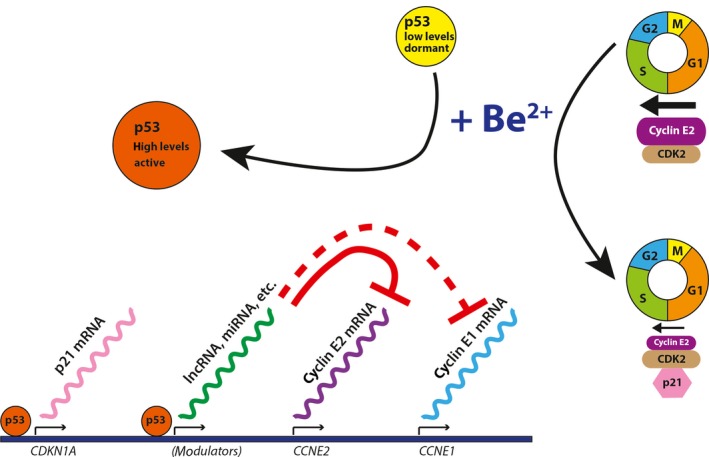Figure 10.

Dual mechanism for p53‐dependent suppression of G1/S cell cycle transition. Beryllium treatment causes activation of p53 (orange circle). It is hypothesized that p53 mediates transcription of p21 and gene expression modulators that include microRNAs (miRNA) or long non‐coding RNAs (lncRNA). These expression modulators cause a decrease in the levels of cyclin E2 mRNA (solid red line) but have little or no effect on cyclin E1 mRNA (dashed red line). Increased p21 protein (pink hexagon) and diminished cyclin E2 protein (purple oval) are two consequences that deter G1/S transition. Tumour cells with defects in cyclin E2 protein degradation pathways tend to maintain cyclin E2 protein levels despite modulation of the corresponding mRNA
